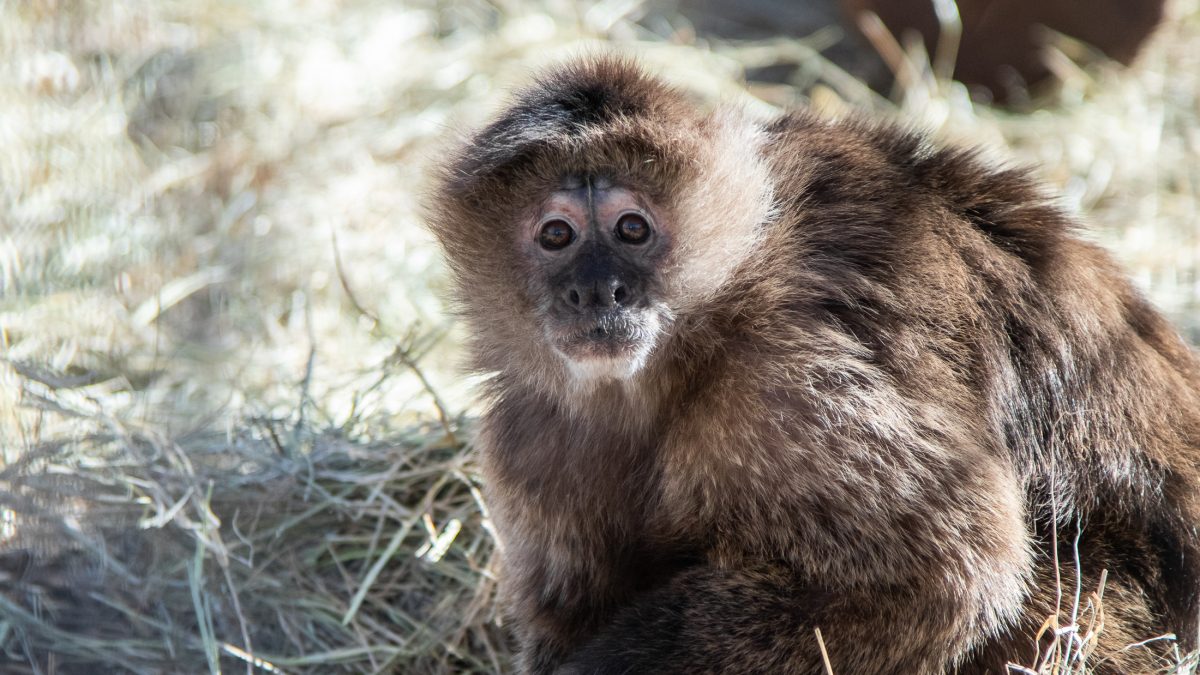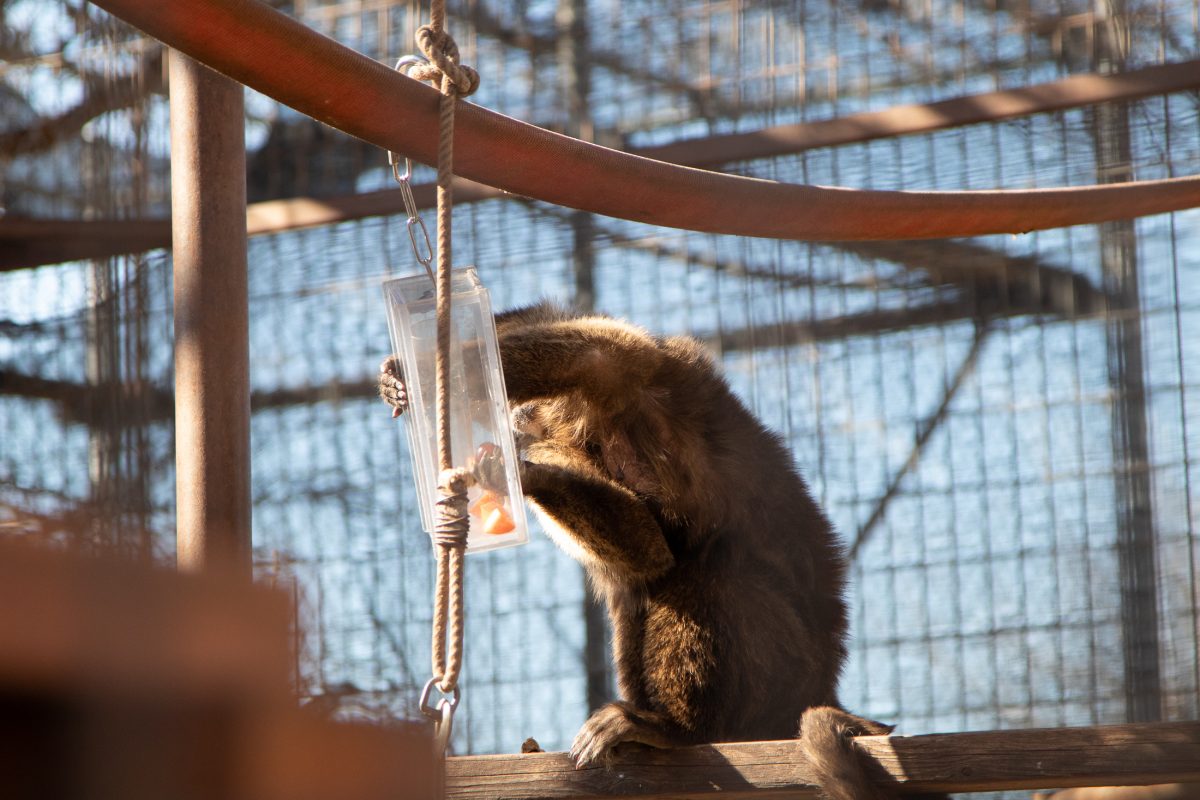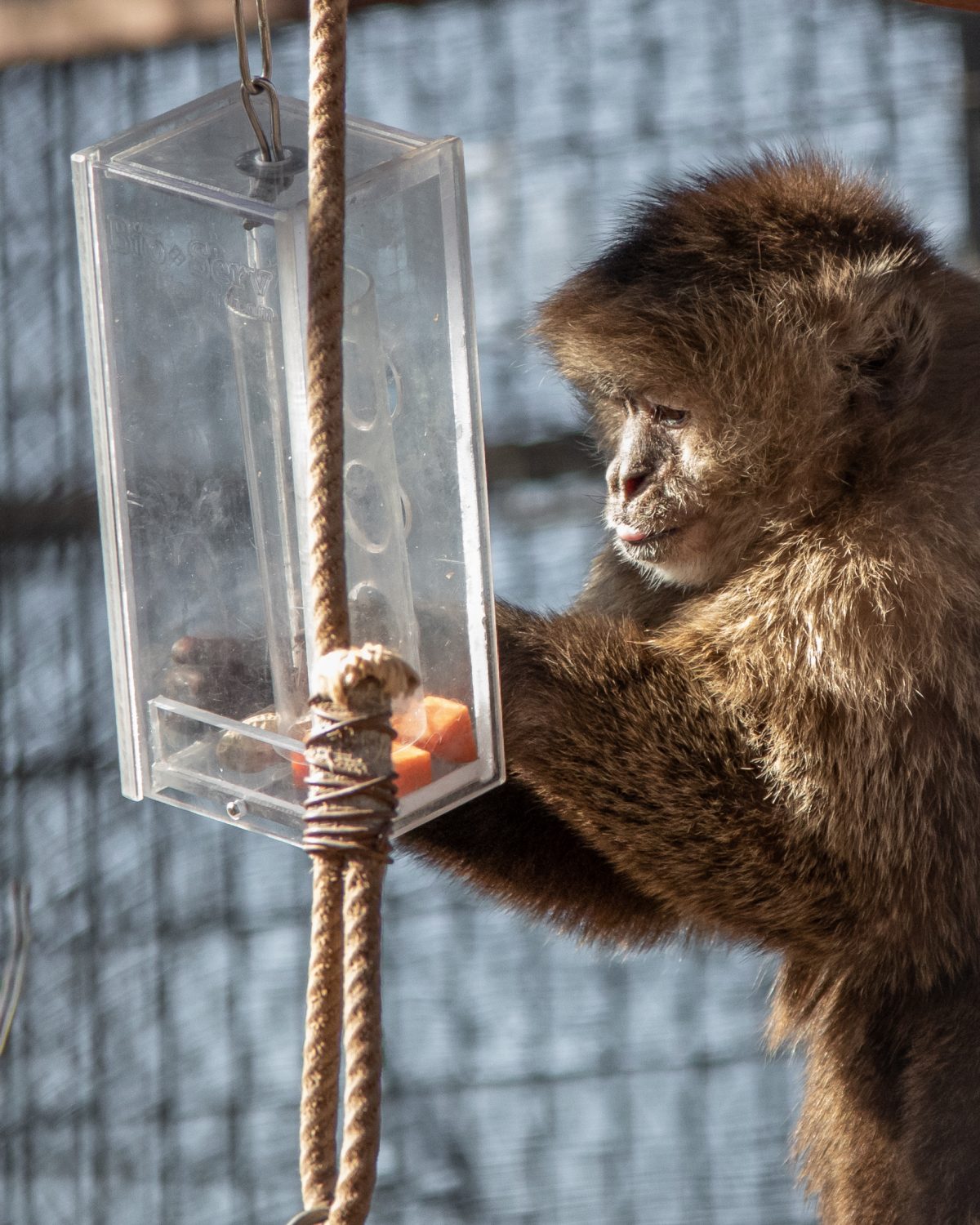MONKEY BRAINPOWER
Capuchins are considered the most intelligent of the New World monkeys and, as far as scientists know, are the only New World primates that use tools in the wild. They use leaves as sponges to soak up rainwater, rocks to dig for food, and often use sticks to probe for insects – and even to fend off snakes.
At the sanctuary, staff work hard to keep all of the monkeys, and especially the capuchins, occupied. In addition to hiding food and scattering forage mixes (pumpkin seeds, sunflower seeds, cracked corn, etc.), we provide puzzles for them to solve.
Magan, a 23 year old weeper capuchin, recently tackled one of the harder puzzles. This particular contraption is made up of a clear cylinder contained within an equally clear rectangular cube. Favorite food items are placed in the cylinder where the monkeys can plainly see them and then the monkey has to reach through holes in the rectangle and turn the cylinder just right to retrieve the food within – not as easy as it looks. In fact, it wasn’t all that easy for us humans to “load” it.
This type of problem solving is well-adapted to capuchin species who evolved to pry, probe and capture insects, eggs, seeds and other food items from crevices and cavities. Still, we were fairly certain that Magan would have to spend a good deal of time working with the puzzle in order to solve it.

We loaded the gadget with some of Magan’s favorite treats and hung it in the enclosure, making sure that she and the other capuchins couldn’t see what we were up to. When we let them back out into their outdoor space, Magan immediately noticed the new addition and climbed to the top of the 15-foot enclosure, leapt gracefully over to one of the firehose “skywalks” and slid down the smooth surface face-first, coming to rest next to the suspended puzzle and cocking her head as if to take its measure.
With her prehensile tail wrapped tightly around her wooden perch, she proceeded to attack it with gusto, turning it this way and that while her small but agile fingers pushed, probed, and picked. We watched in amazement as she victoriously retrieved her first treat (a grape) within 15 seconds.

Magan 1, puzzle 0.
She quickly fell into a routine where she would run a short distance away, devour her treat and then return to repeat her attack. She continued like that until every treat was rescued.
Once all of the snacks were gone she tossed the puzzle back and forth a few times in dominant fashion and then completely ignored it from then on, allowing the other capuchins to play with the apparatus but minus the delectables.
Magan had just mastered one of the hardest puzzles we have. Total time spent engaged? About 5 minutes.

Did you know that capuchins have the largest brain-to-body size ratio of any primate other than humans?
In the wild, monkeys are constantly and directly interacting with an immensely rich and dynamic environment which requires them to utilize their significant intelligence, along with other evolved and learned attributes, in order to thrive in that particular locale.
Those very behaviors that allow them to prosper in the wild don’t disappear in captivity and so we are strongly committed to providing as highly an enriched environment as possible – even if our 60 minutes of effort only lasts for five.

